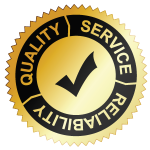
The current condition, overall health and longevity of a hot tub largely depend on three things:
- How Well It’s Made
This has to do with engineering, workmanship and quality of materials. There can be big differences between brands and models.
You’ll likely be better off with a 25-year-old Calspa than a 5-year-old Canadian Spa (A Canadian company that imports tubs from China) because Calspas are way better built, and they can last ten times longer.
Check out this page which explains this concept in more detail: https://hottubsgalore.ca/defining-quality-in-regards-to-a-cheap-hot-tub-purchase/
- How Well It’s been Treated
Hot tubs need to be cared for and properly maintained (correct water balance, frequently serviced, protected from the elements, kept clean, etc.).
A well-maintained, well-kept older hot tub in a gentle environment will be in better condition and last way longer than a neglected newer one in an aggressive environment.
- What Repairs, Improvements and/or Upgrades Have Been Made?
Repairs, replacements, upgrades and ongoing upkeep can fix and/or avoid problems and improve its performance and longevity.
An older hot tub with newer/upgraded equipment can run like new, while a newer one with original/lower grade equipment may run poorly and be at risk of failing soon.
Real-Life Examples:
At the time of this writing, we currently have in-stock a 3-year-old Infinity Spa (bought at Costco) that’s on its last legs. Even if we fix what’s not working now, it will still likely only last another 2-3 years before it’s done for good. These are “disposable” hot tubs with a very short lifespan.
We also have a 30-year-old Beachcomber in stock that’s still in great shape and will easily be good to go for another 10+ years.
So rather than asking “How old is it?”, ask, “What immediate condition is it in? How healthy is it overall? What work has been done to it? How many years does it have left?” Because that’s what really matters.






